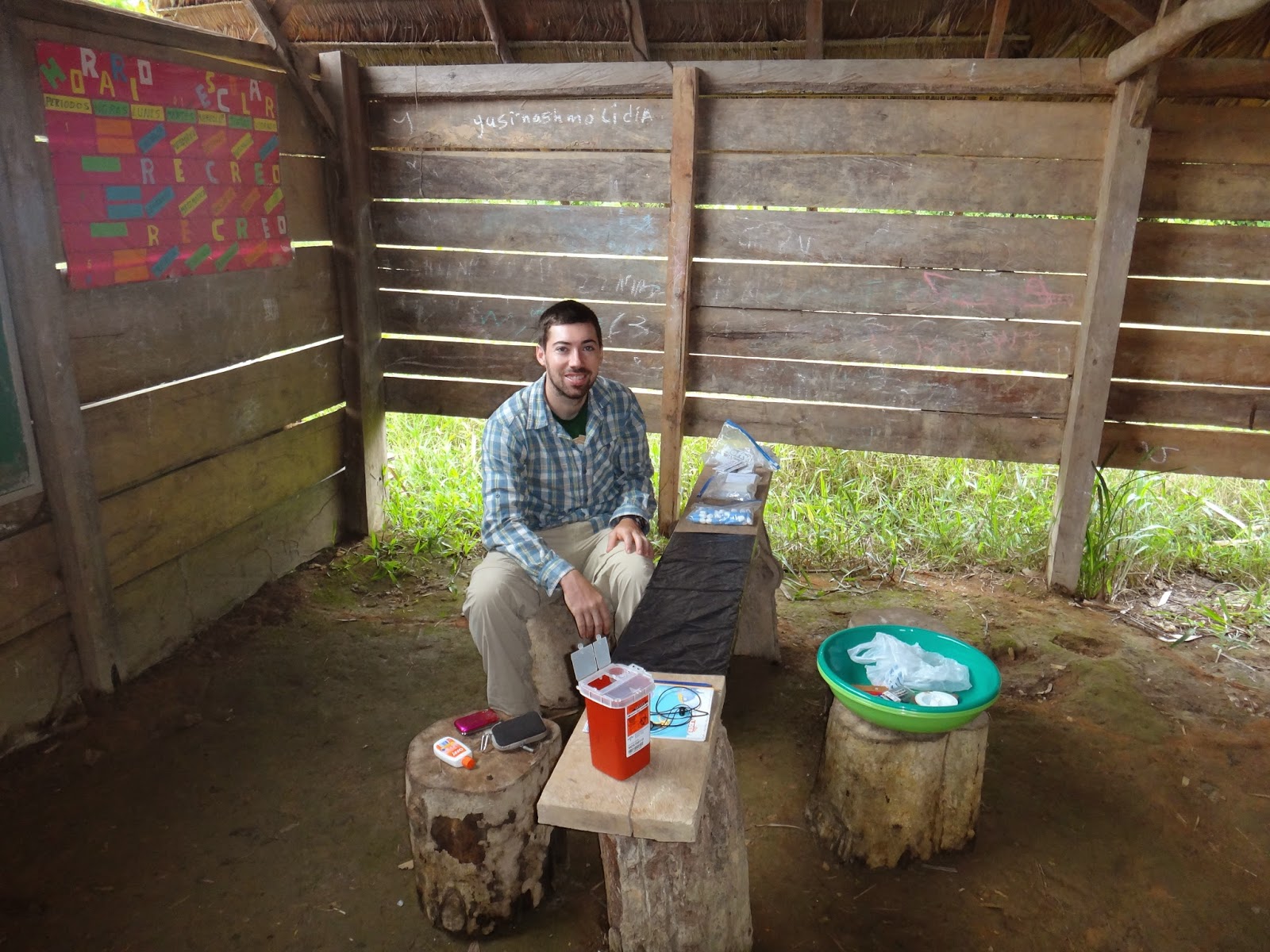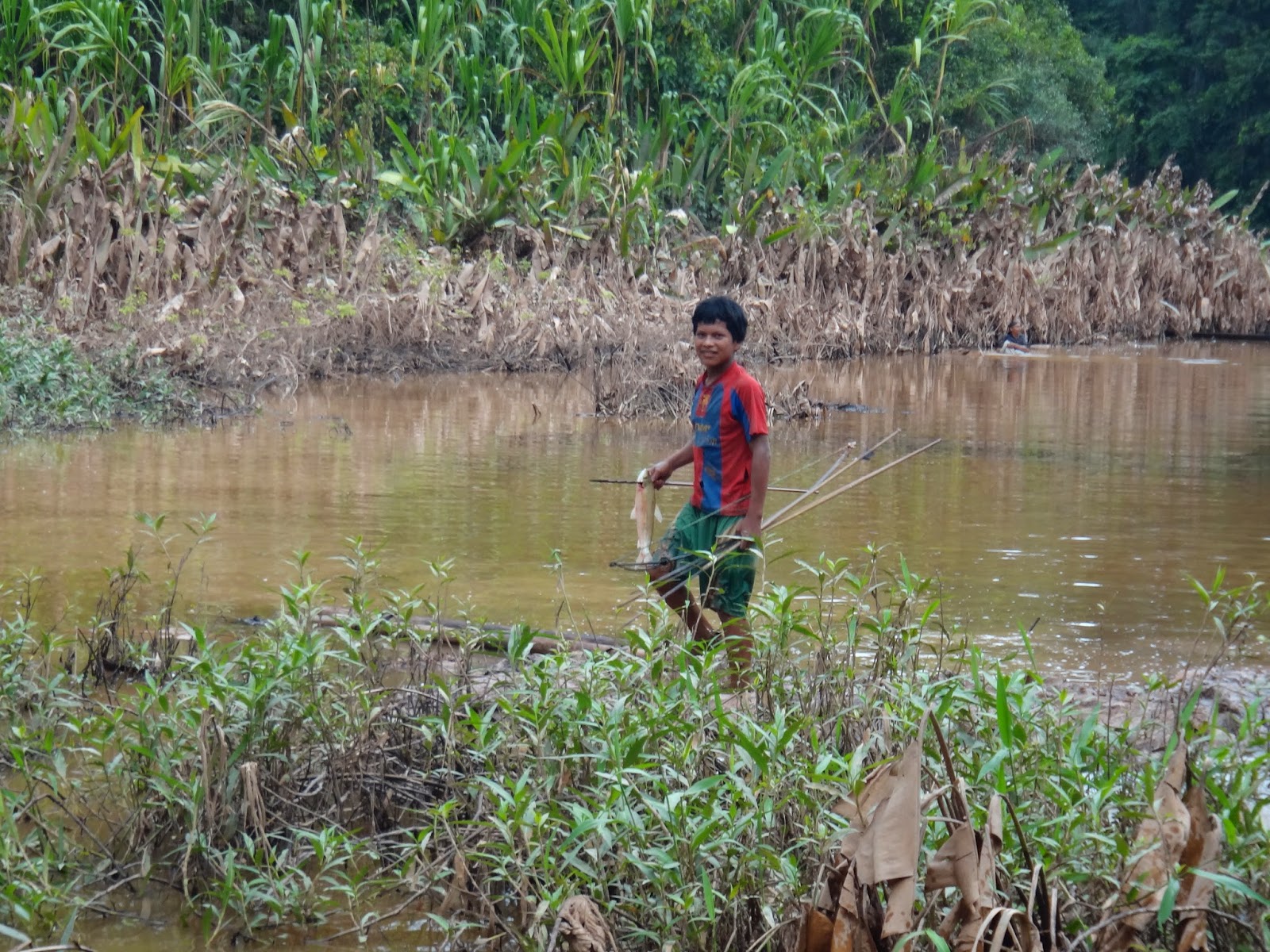Here we go again! We were scheduled to head back to the
field in late-January but were delayed more than a month due to devastating
flooding in the Bolivian Amazon region. After a prolonged stay in San Borja, we
are finally heading out – this time to Anachere (the community of 16 families
located two days upriver). Before leaving, we want to provide you with an
update on the flooding in Bolivia.
For a couple of days in San Borja, it looked like the river
might enter the town. Work crews built a mud walls to hold the water back, but
the water came pretty close for a couple of days to coming over the dikes and
into the city. Here is the dike –
The river, usually around 200 meters wide, was several
kilometers wide. Many people who live outside the city have lost their homes,
many of their possessions, and cattle.
As we’ve shared previously, the communities were very
affected by flooding with many of them underwater. Campo Bello, the close
community that we work in, was completely flooded. The Tsimane Flood Relief
Fund and other NGOs have responded to the crisis. During the severe time of flooding, hundreds of Tsimane' families came to San Borja to camps set up in the schools. In the schools, they were given shelter, water, and food, as well as medical care.
During a visit, we found little Rabiano, the son of the corregidor of Anachere, who had come down with his older brother to go to school in a closer community.
What has struck us is how little international coverage this flooding has received. We kind of assume that when big news items happen around the world, we’ll hear about it, but this experience has taught us that a lot of things can be happening around the world that we are not aware of and other times what is actually going on on the ground level is very different than what information is shared.
We’ve had a break in the rains for now. Water is beginning
to recede and the ground is starting to dry in some places, though not all. We
flew to Trinidad this week and were shocked to see the flooding from the air.
The city of Trinidad is an island – surrounded by water.
The road between San Borja and Trinidad is closed. We
figured it was pretty muddy, but what we saw from the plane was very
surprising. In many places, the road is completely submerged in water. Yes, that line in the picture is the only road from the west to Trinidad under water:
Many of the communities outside of Trinidad are still under water and from the flight we got a sad view of the reality of the situation as many houses are half under water:
On a lighter note, after spending more than 3 weeks in
Customs here, our water filter finally made it to Trinidad for us to pick up.
We are looking forward to bringing it to the field.
On the flight to Trinidad operated by TAM, the military airline which is now also commercial, we had fun jump seats and we were pleased to see the plane
had a spare wing.
Because you never want to fly without a spare wing and a good wing man to hold it up.
And finally, we celebrated Asher’s birthday a little early
this year with a great steak dinner followed by an exciting win over NC State.
Thank you again for your concern and sending your thoughts
to the people here. Family and friends have responded with an outpouring of
love and compassion. We can’t wait to
get back to Anachere! We don’t know what to expect there – we’ve heard very
little from the communities far upriver, but we are hopeful that they have not
been affected as much by flooding since they are higher. We’re taking aid packages to 2 communities (46 families total in Santa Maria and Anachere), where we’ll give out a package of plates, spoons, soap, rice, and canned fish to each family with donations we’ve received.



























